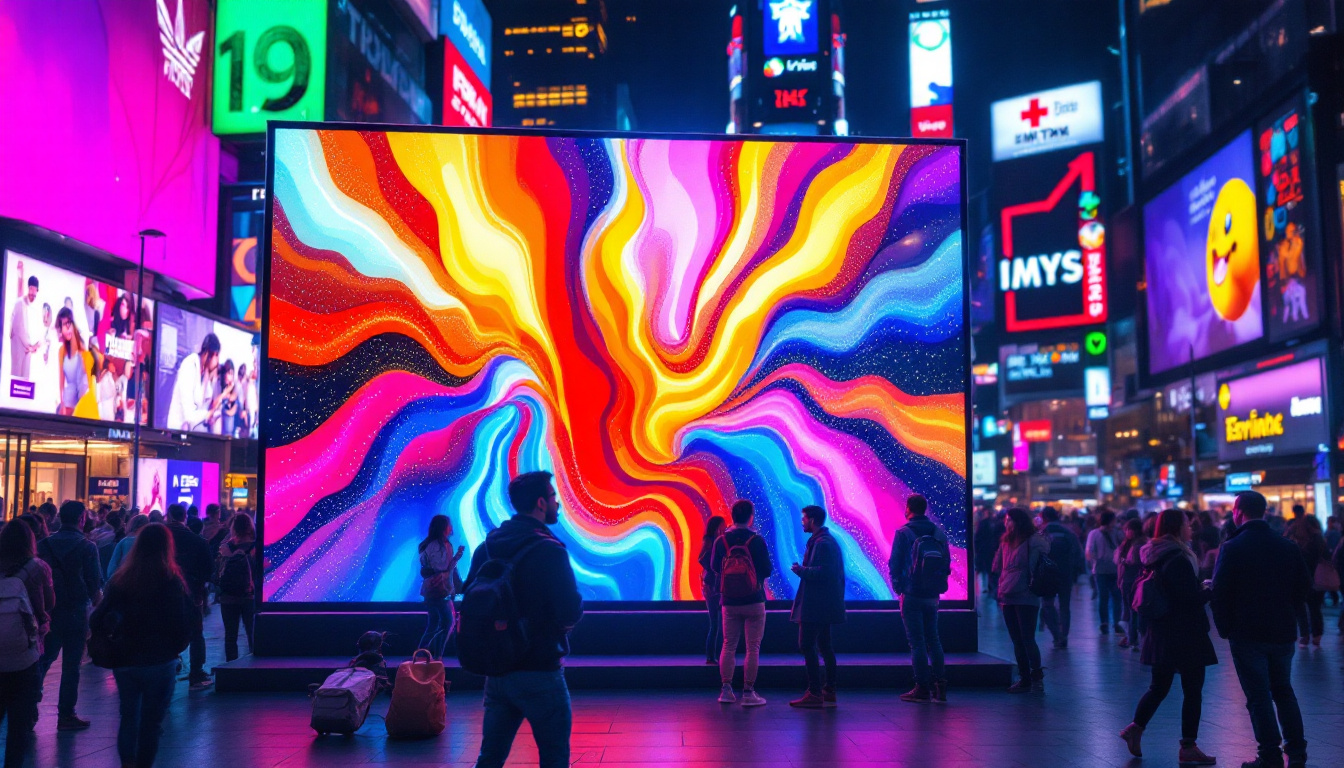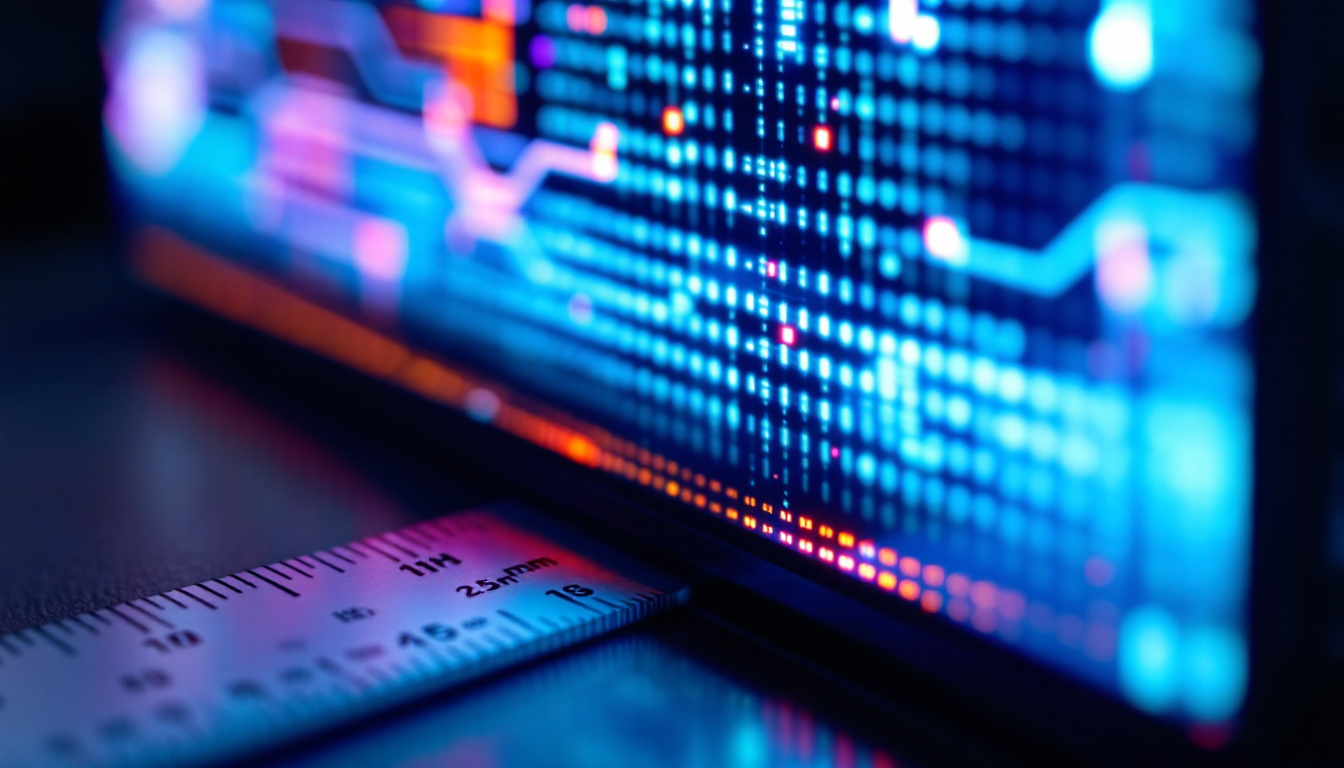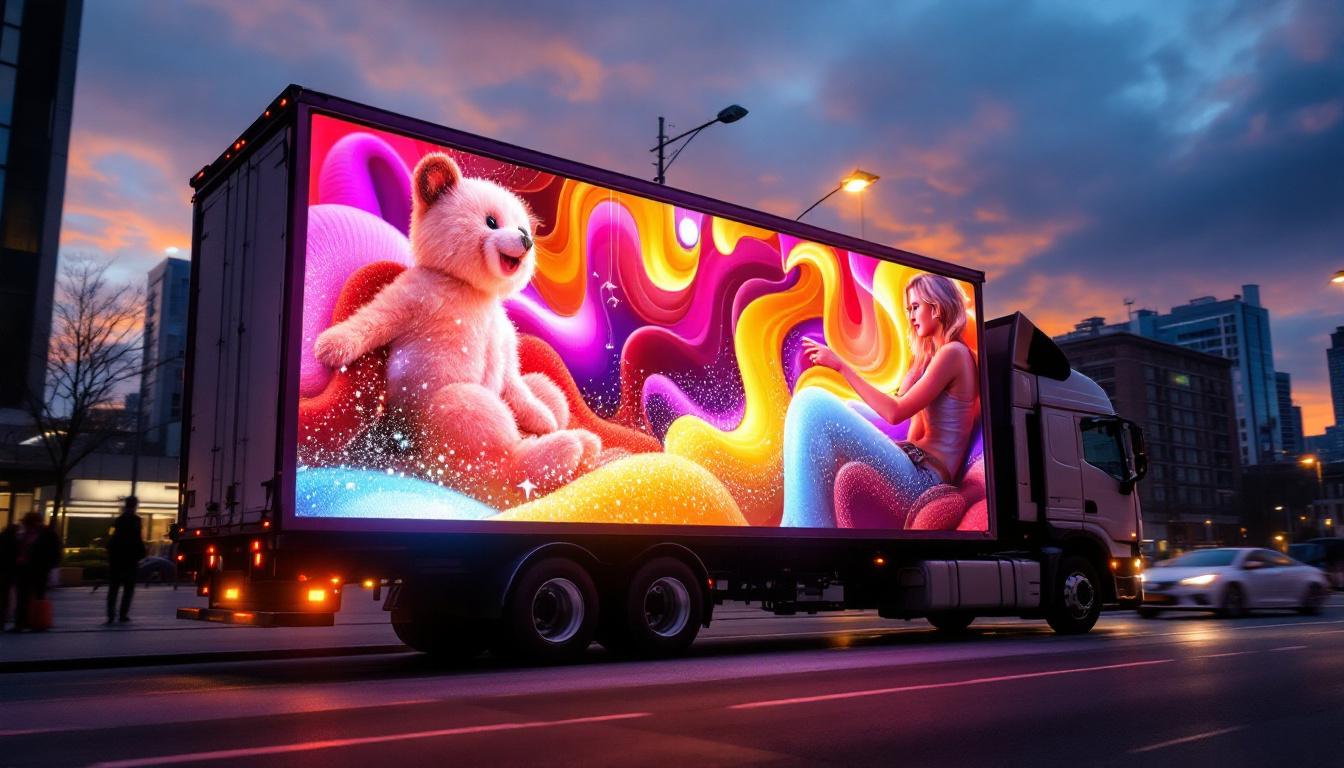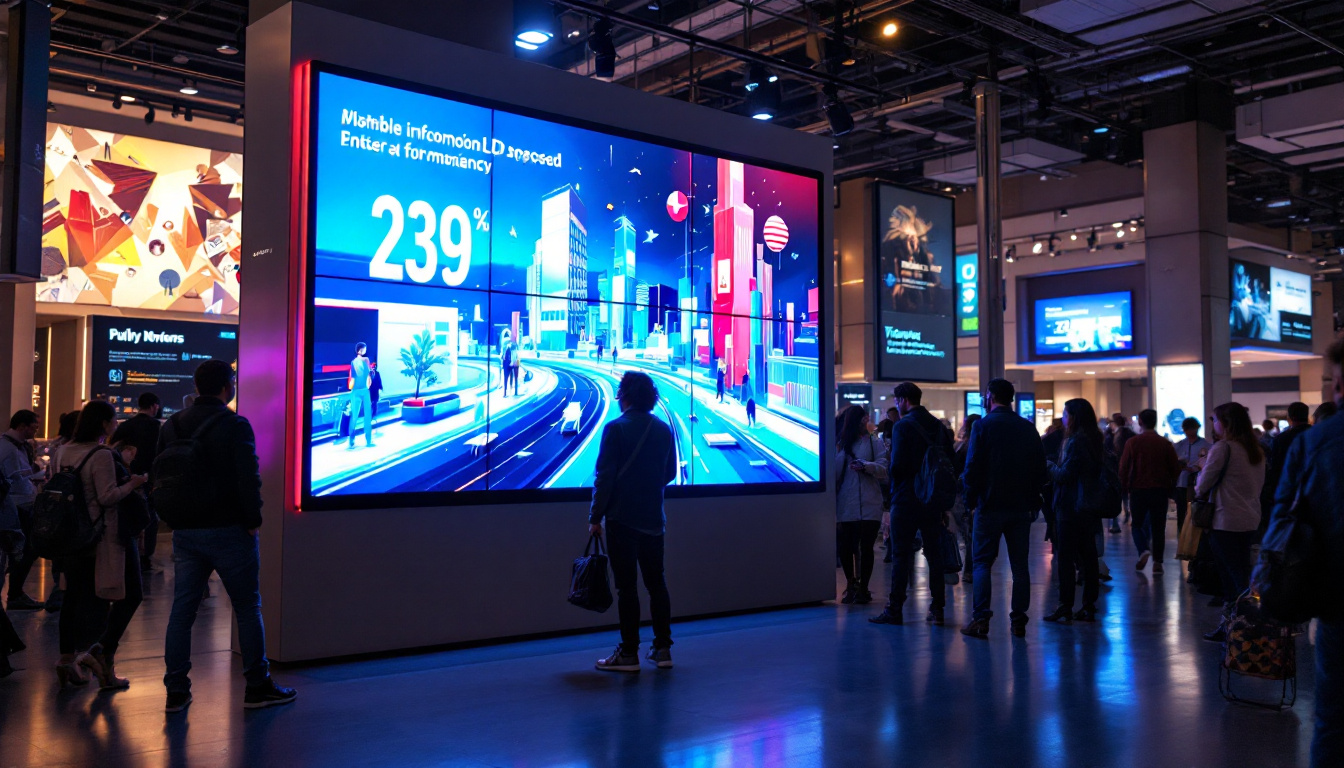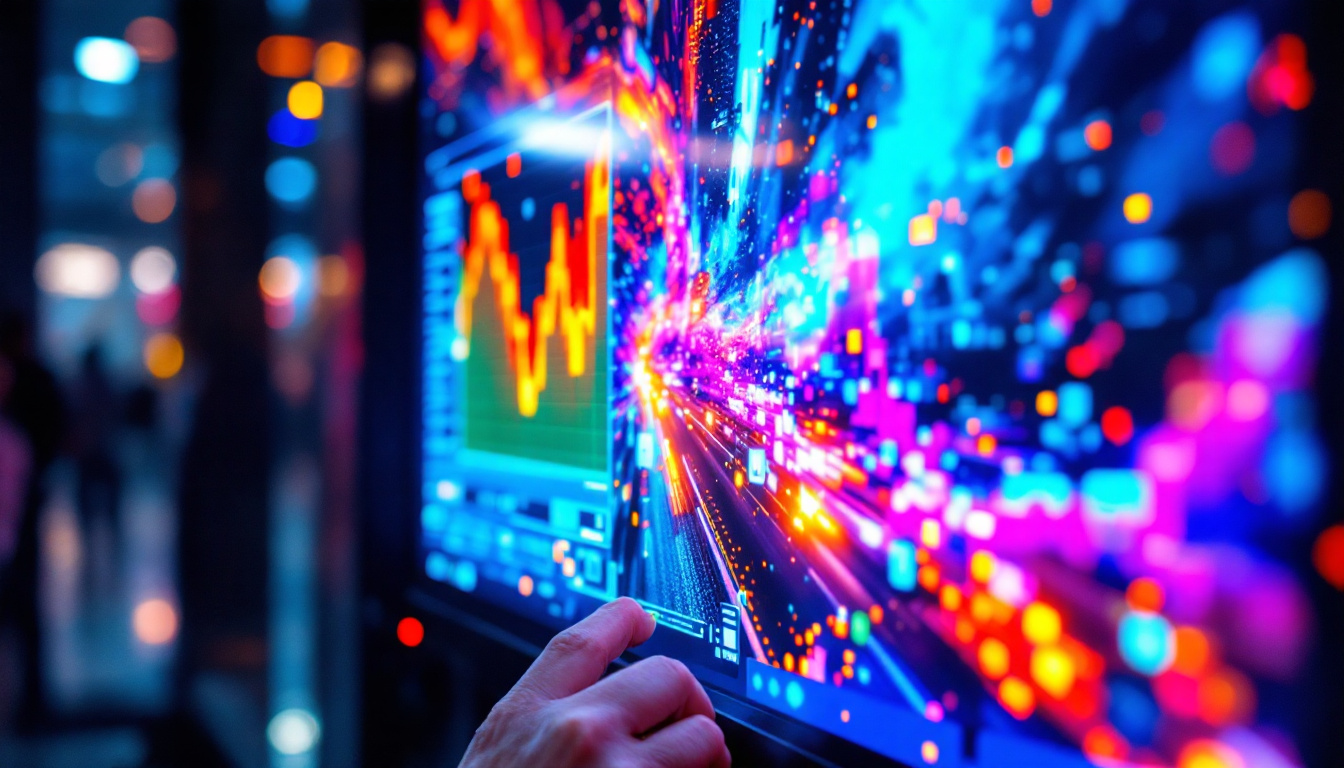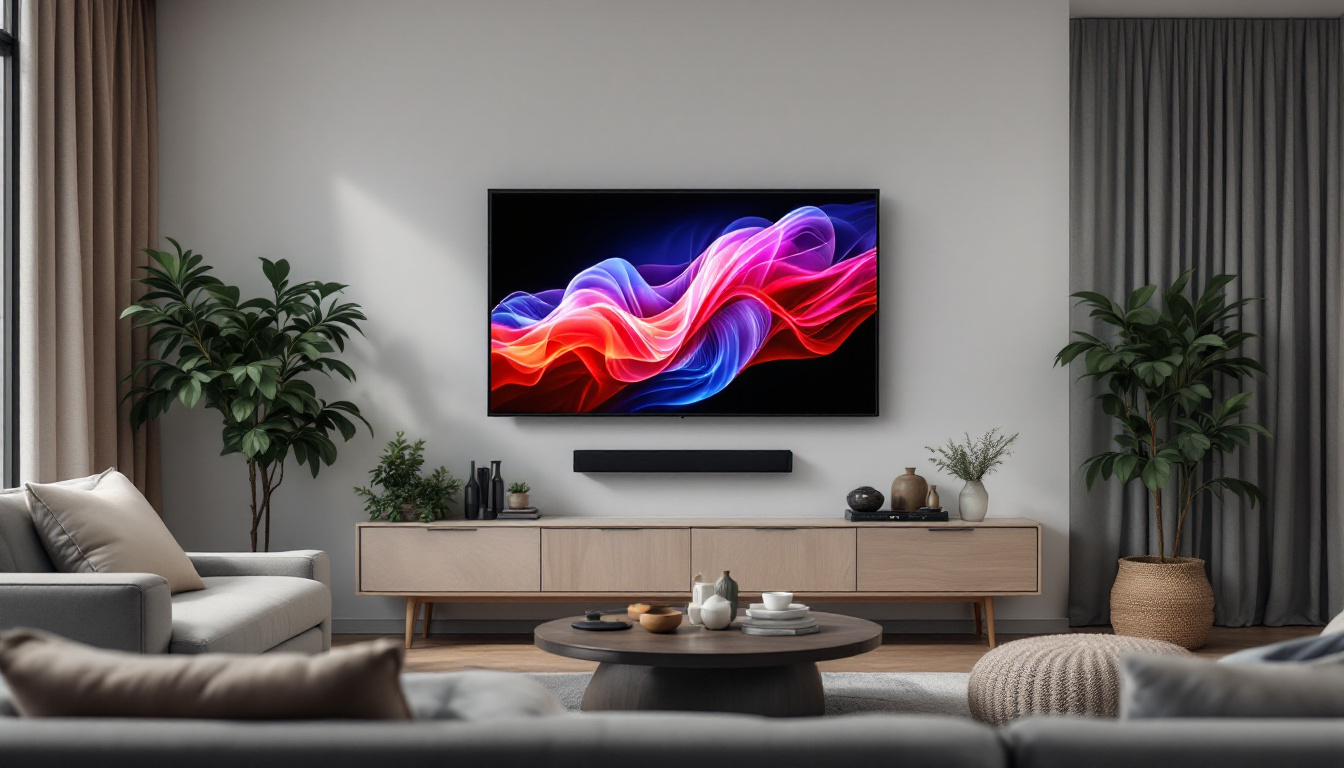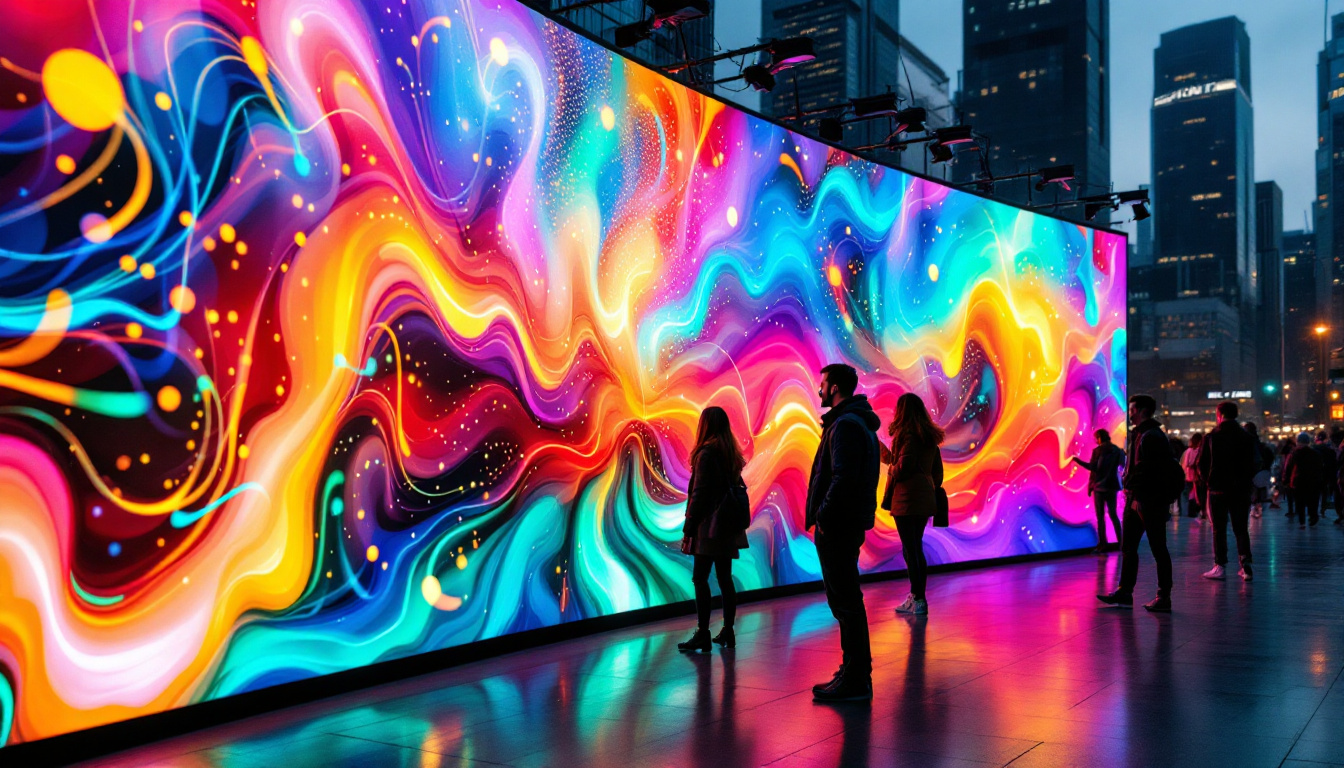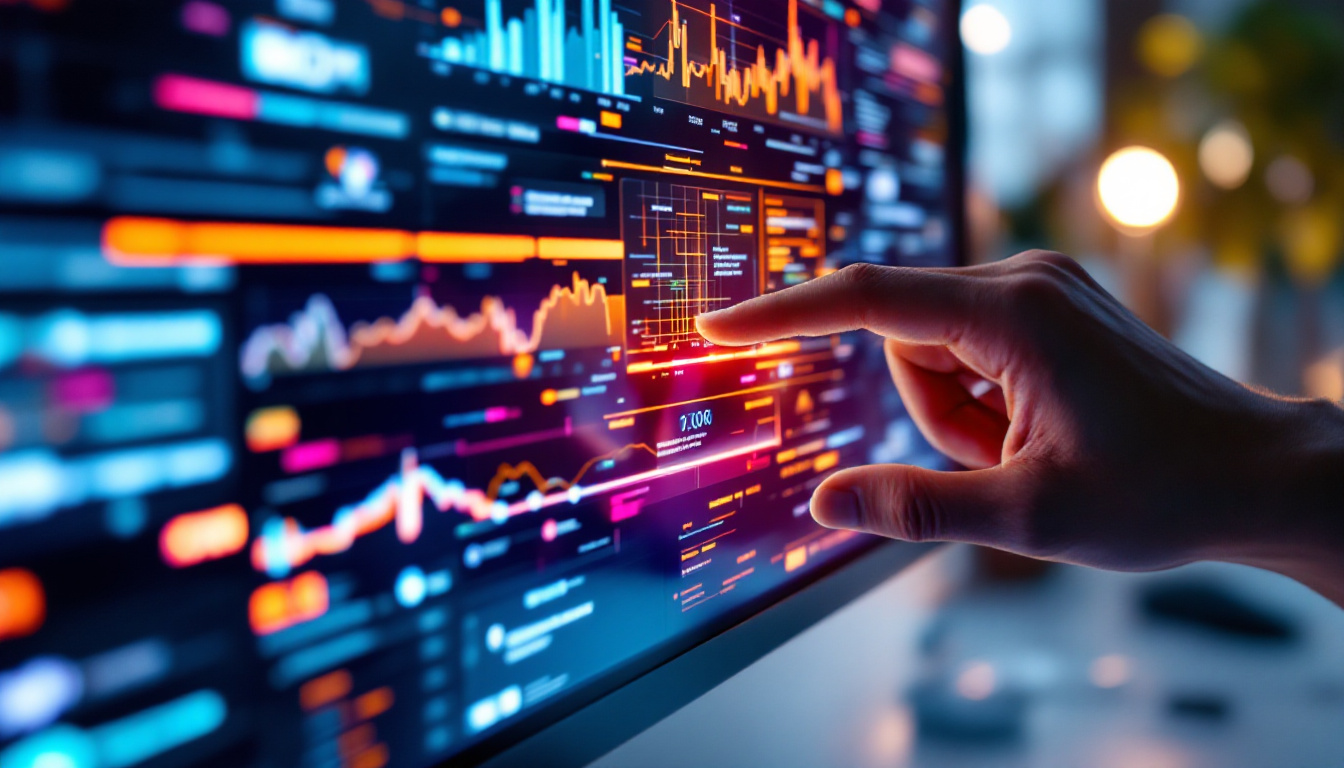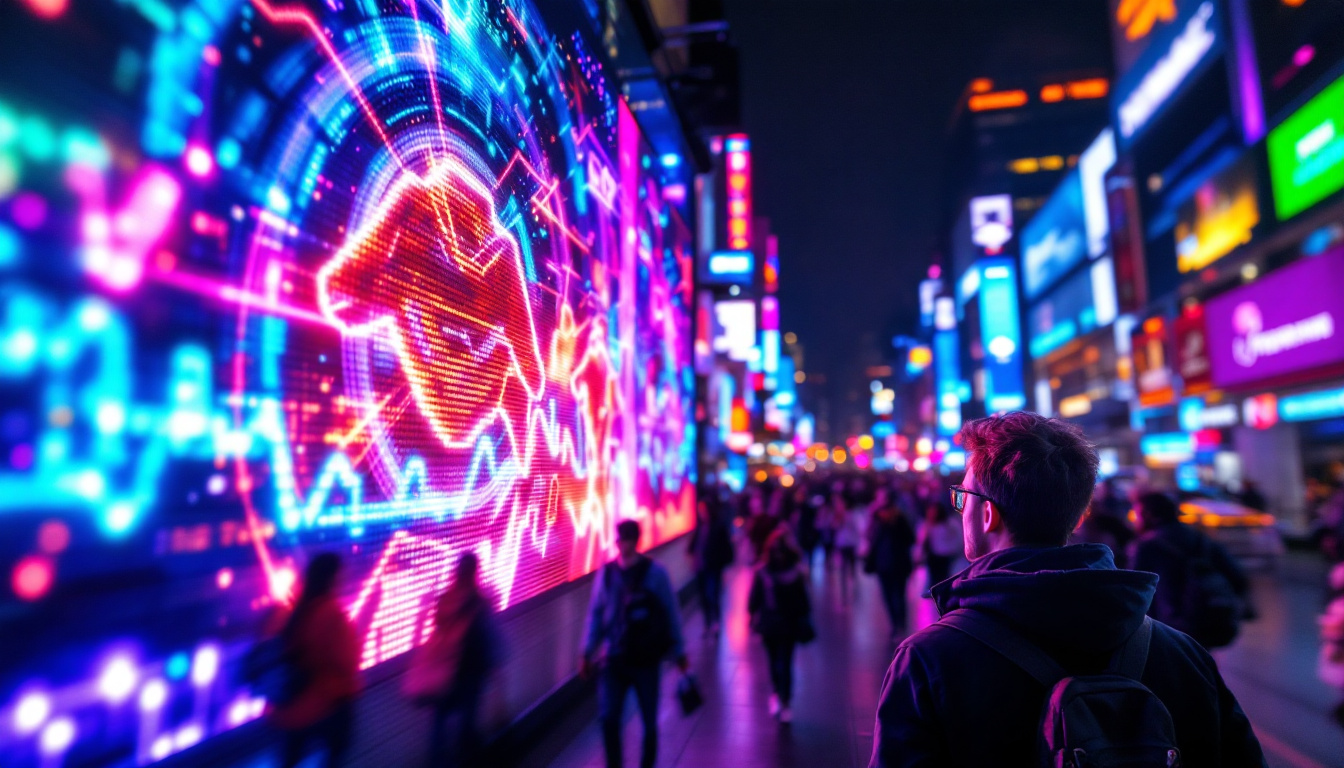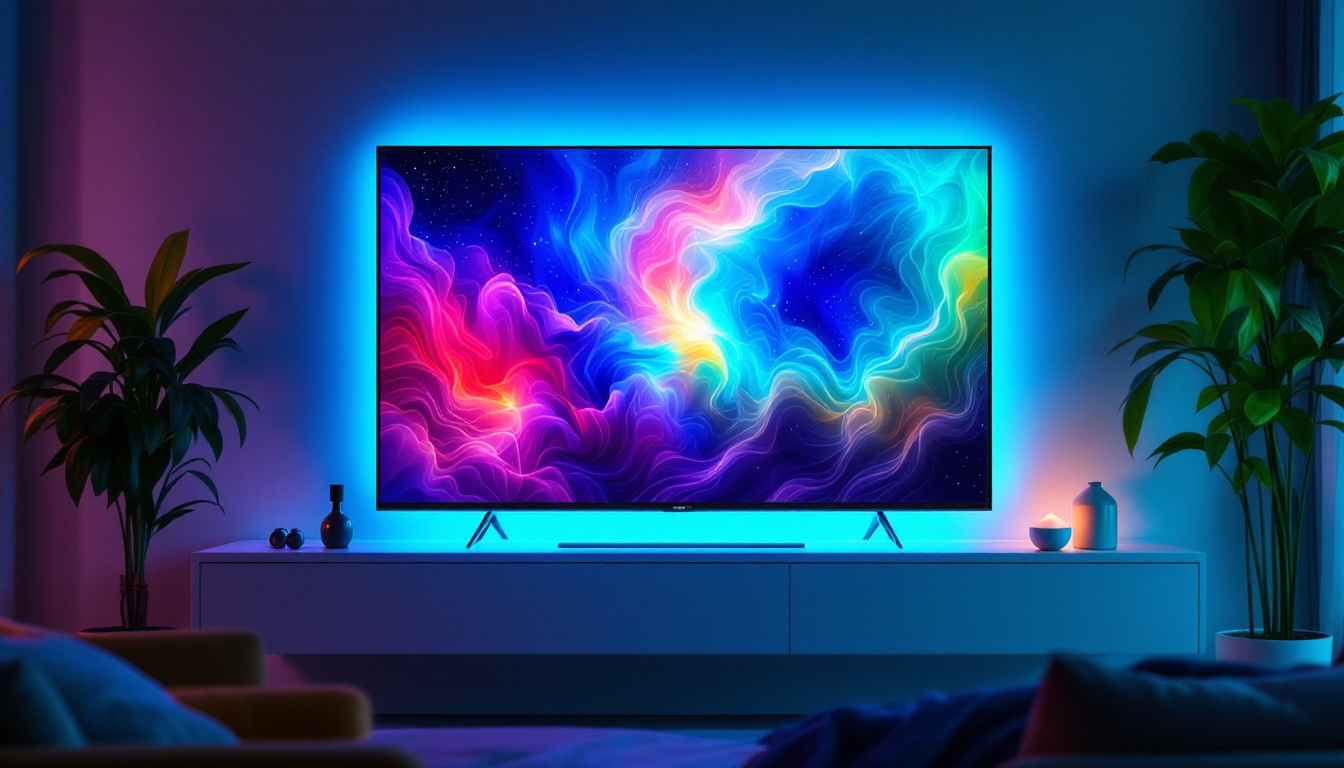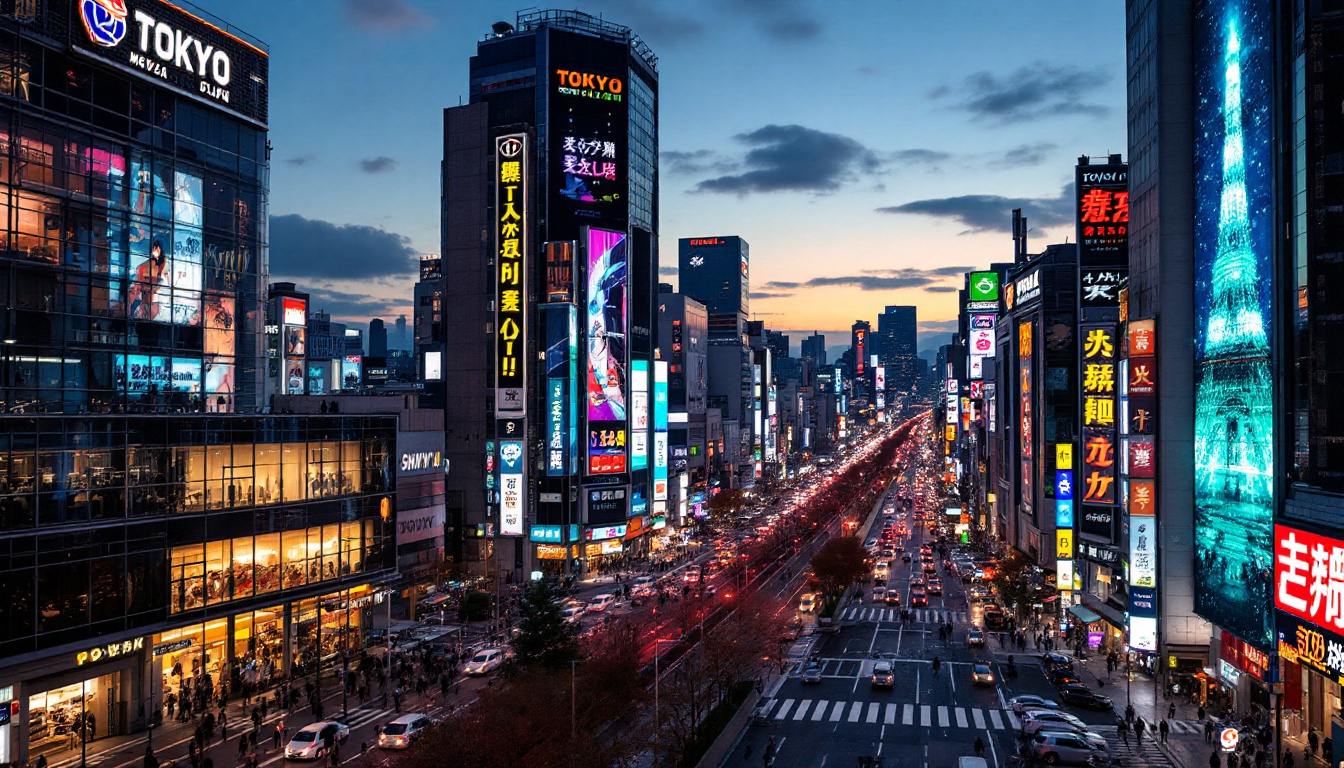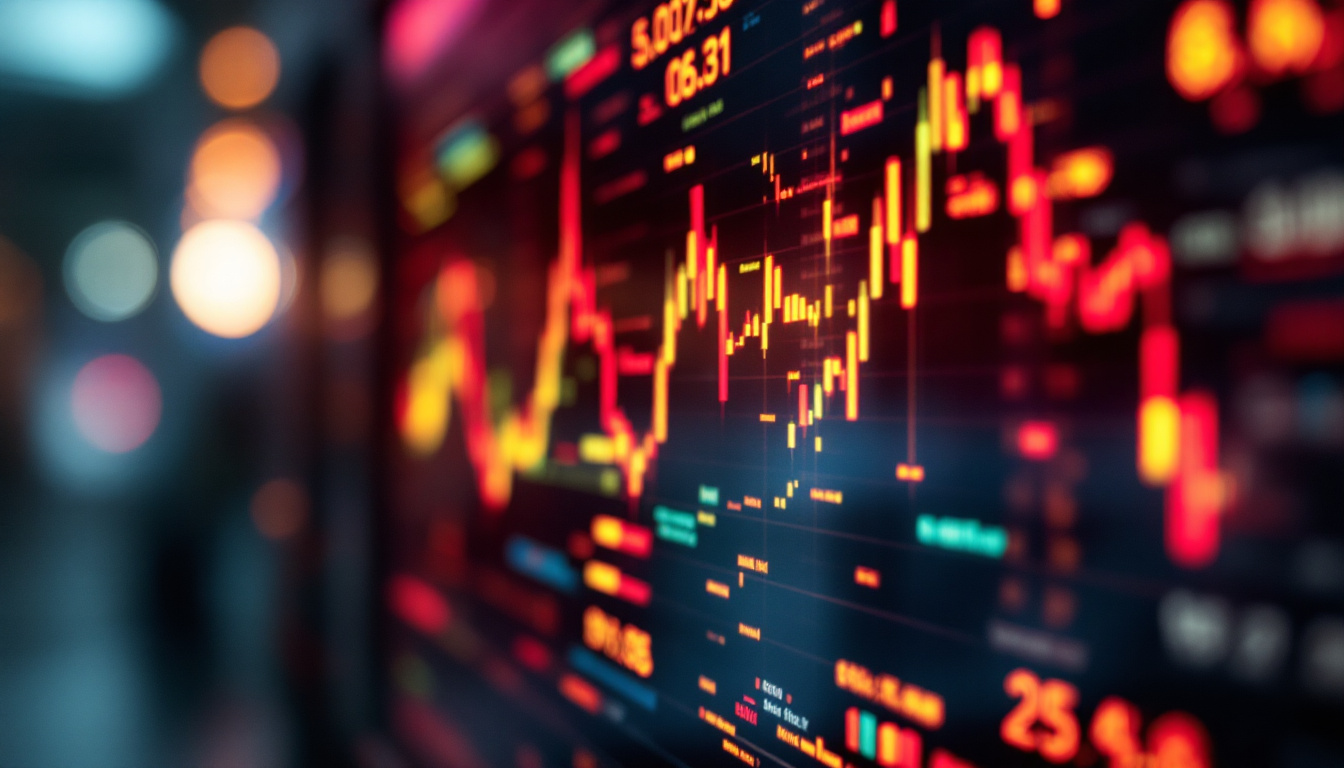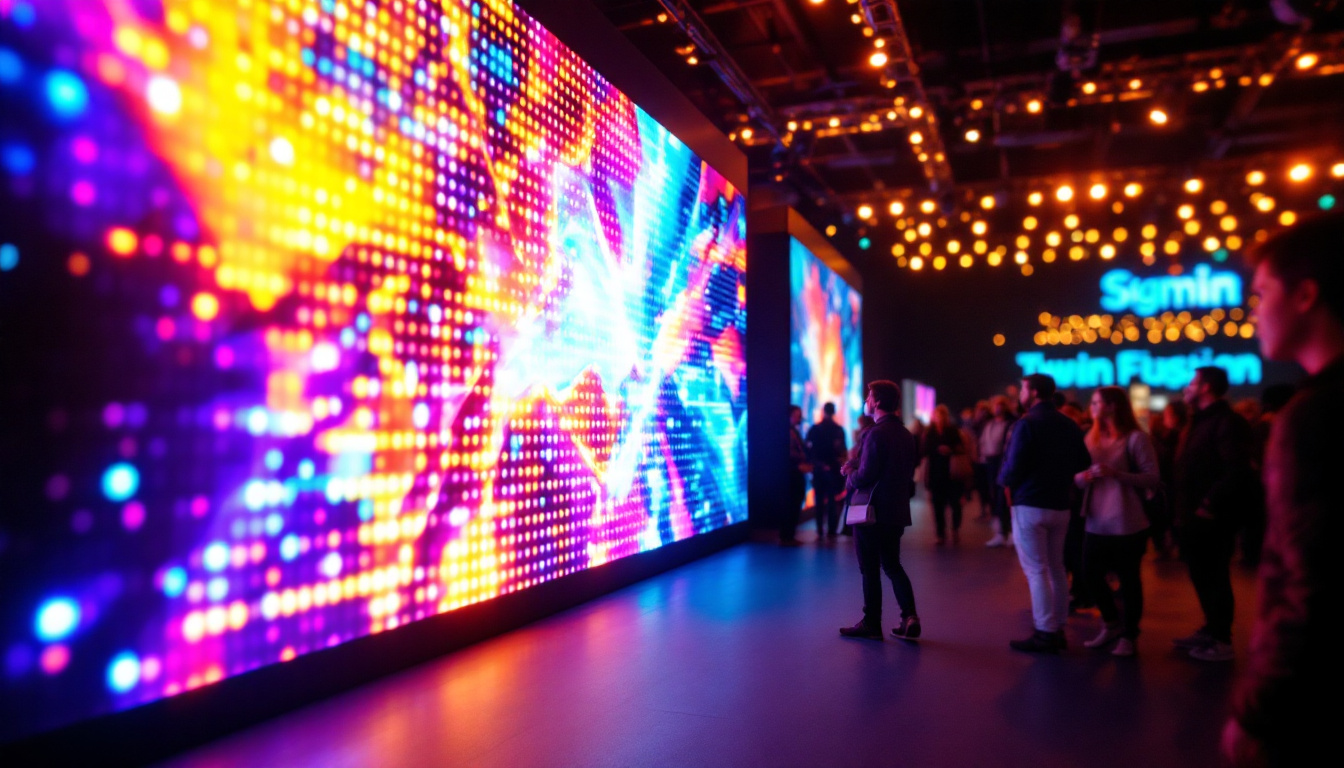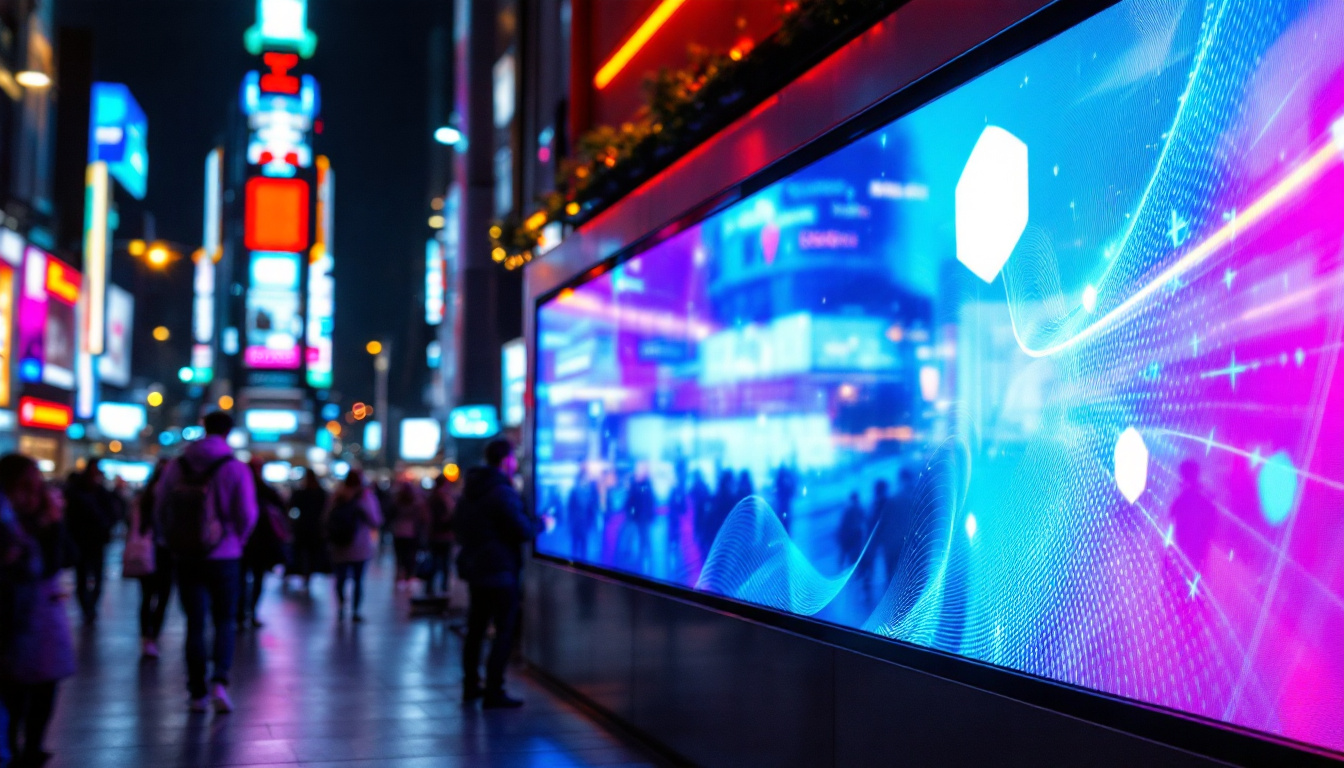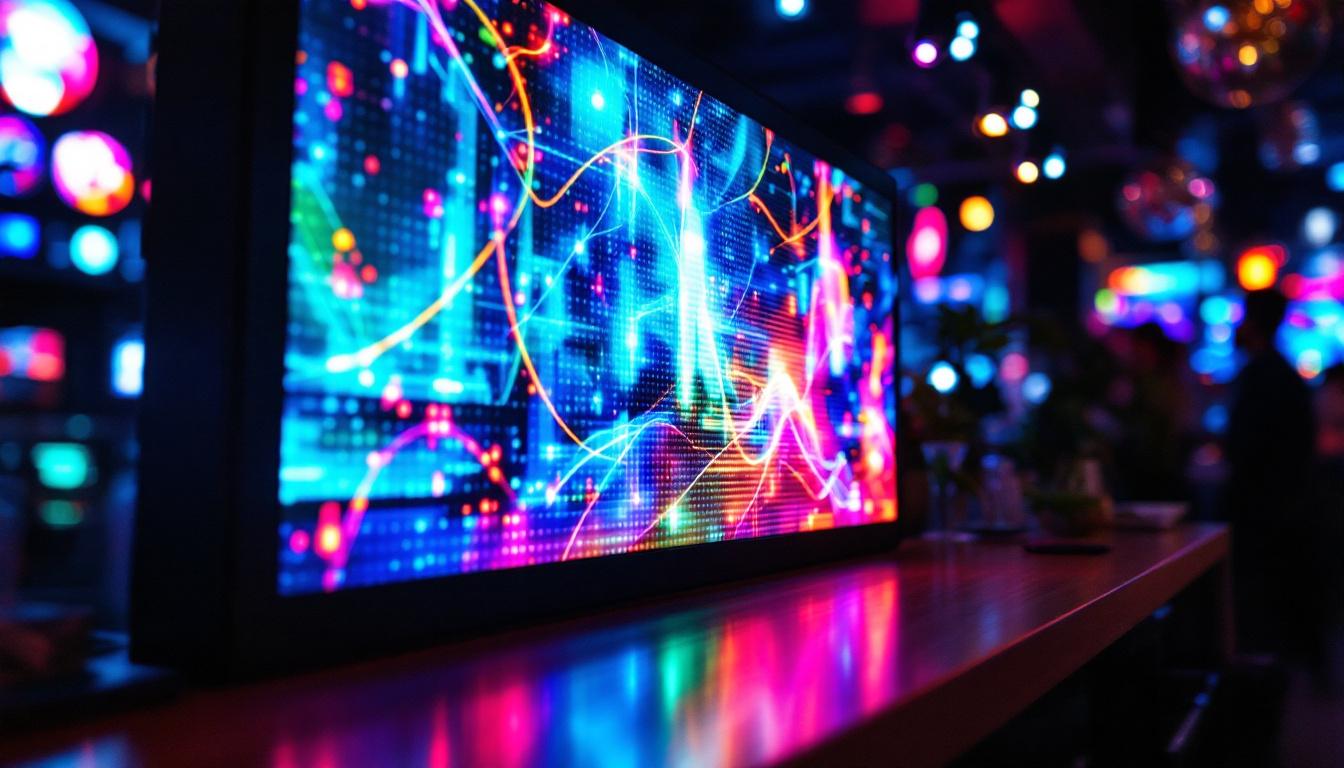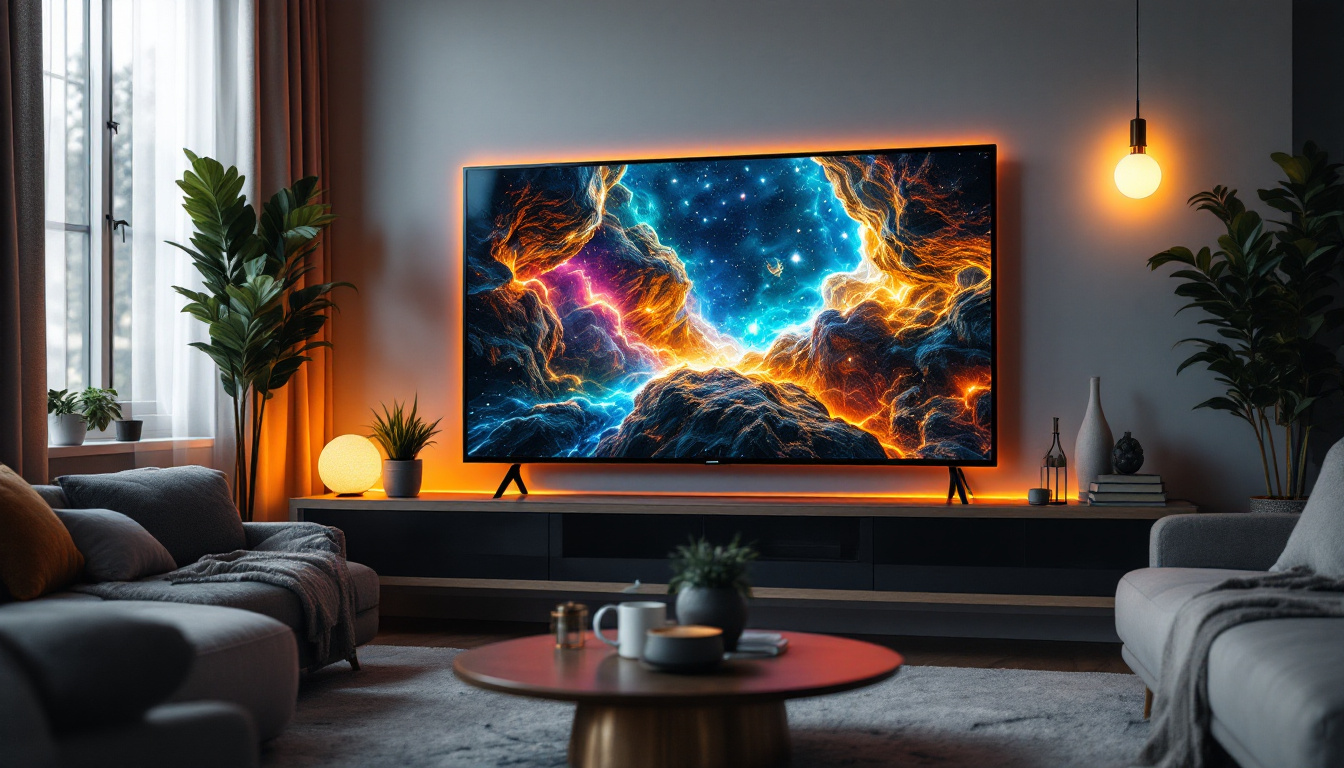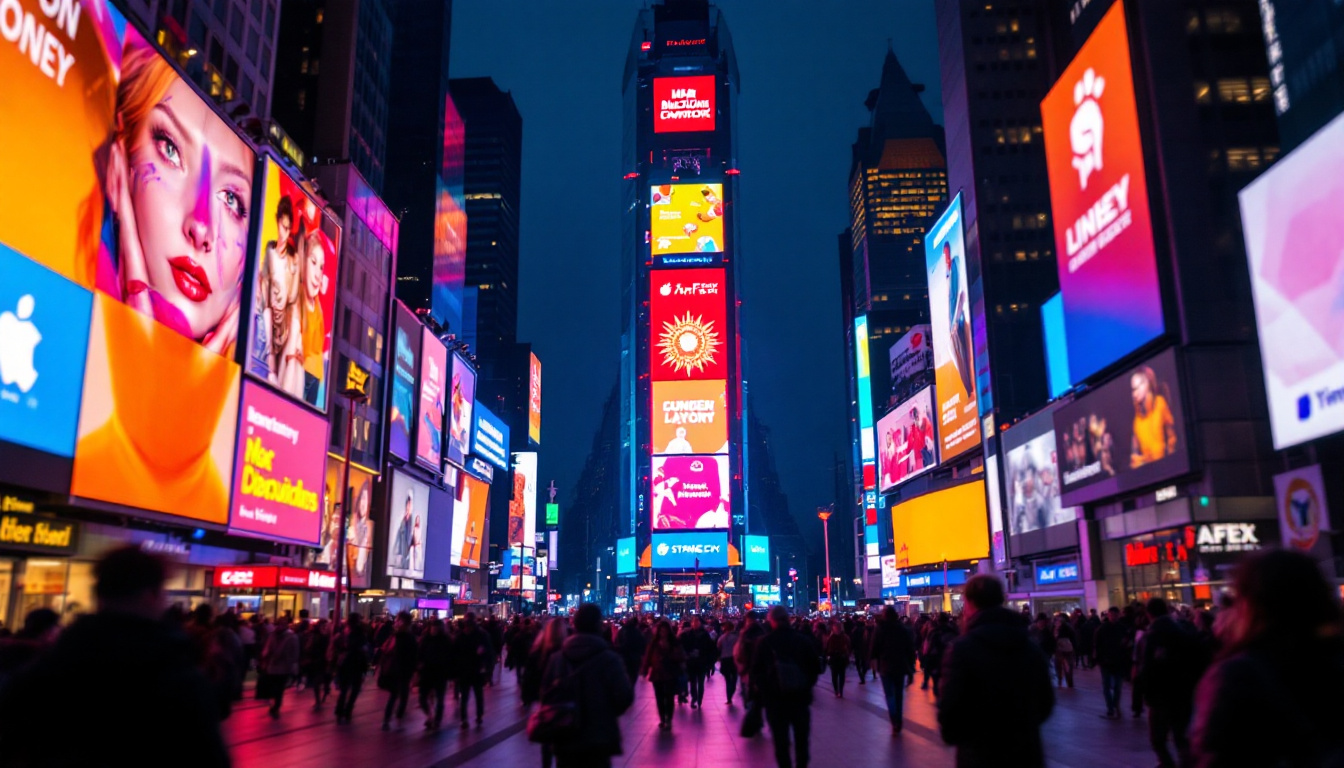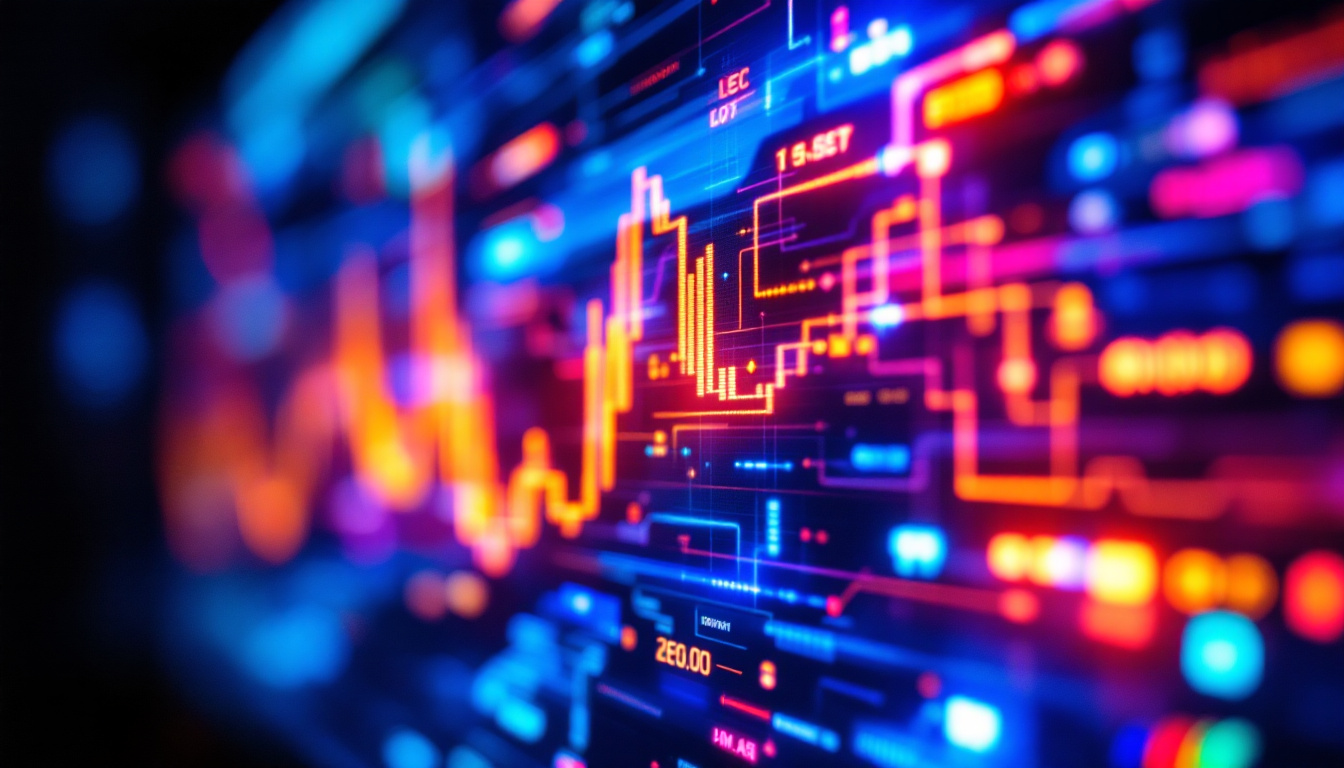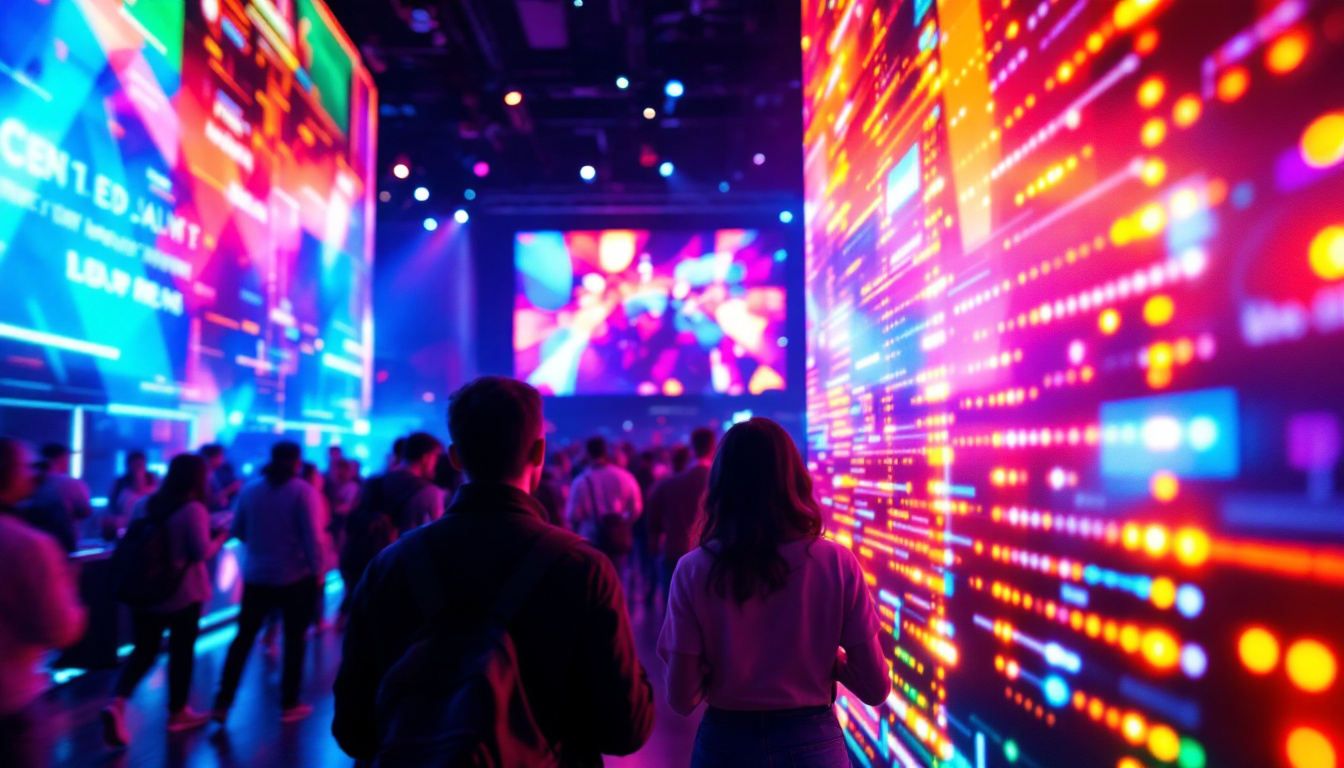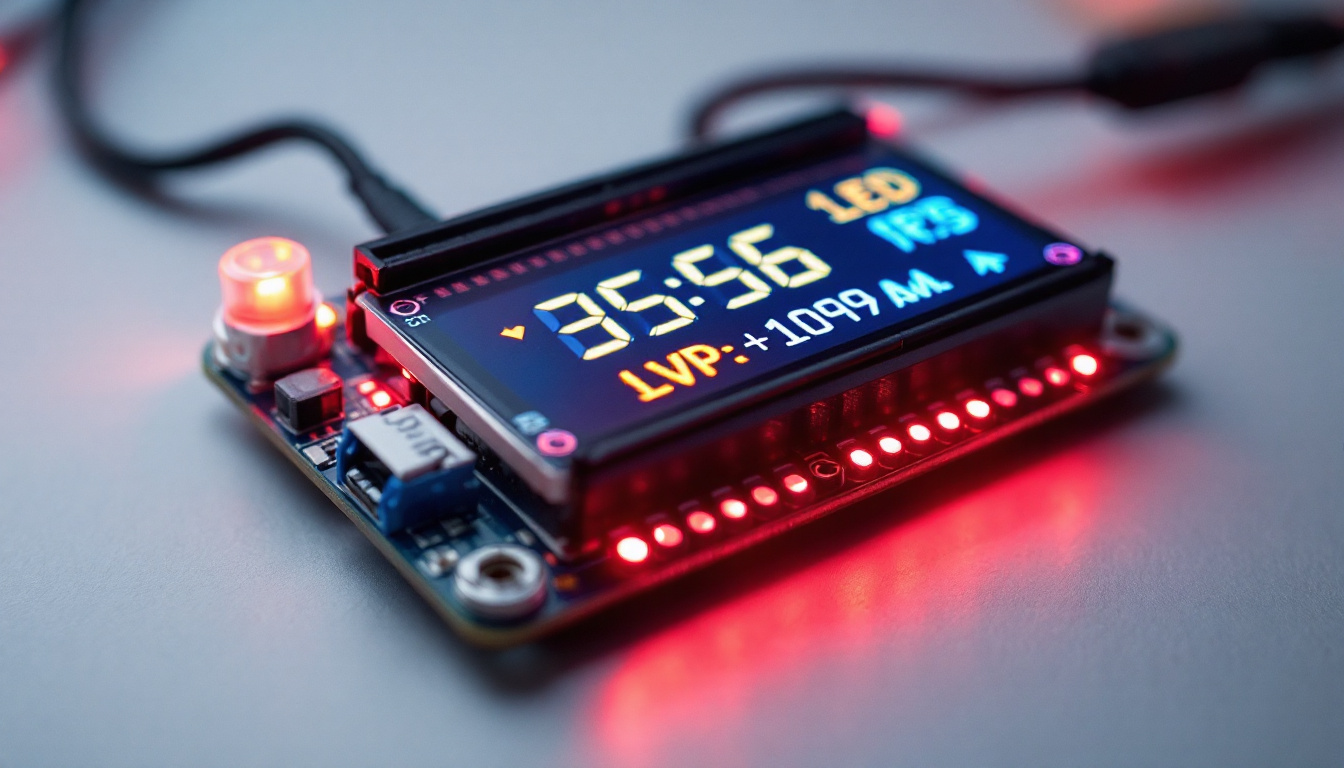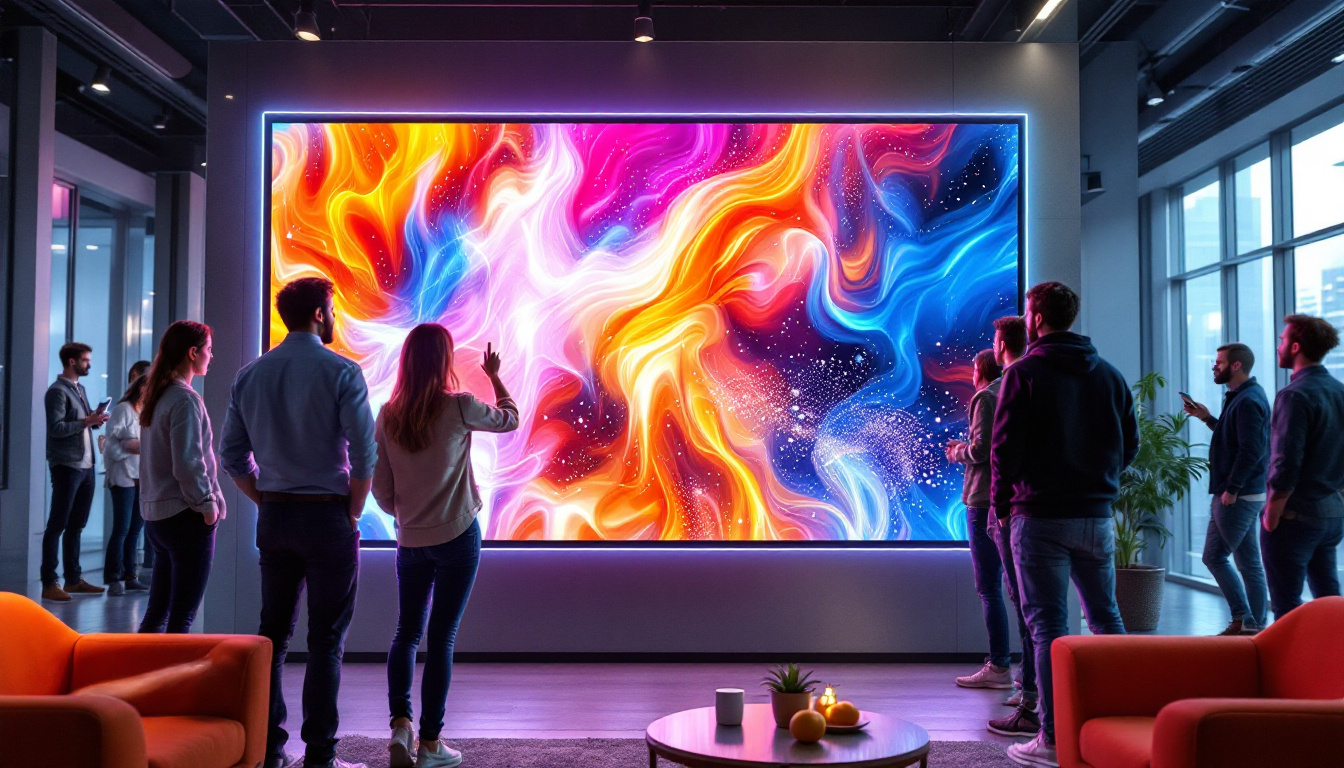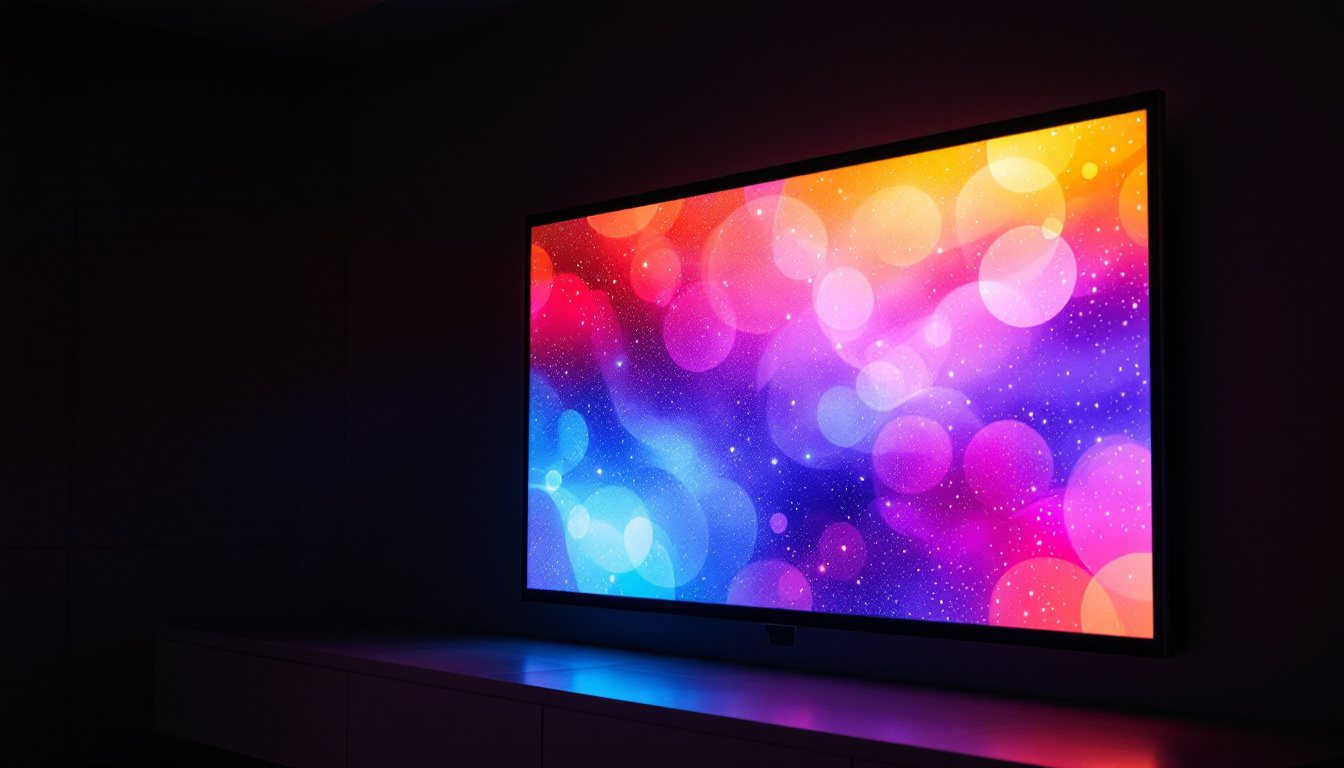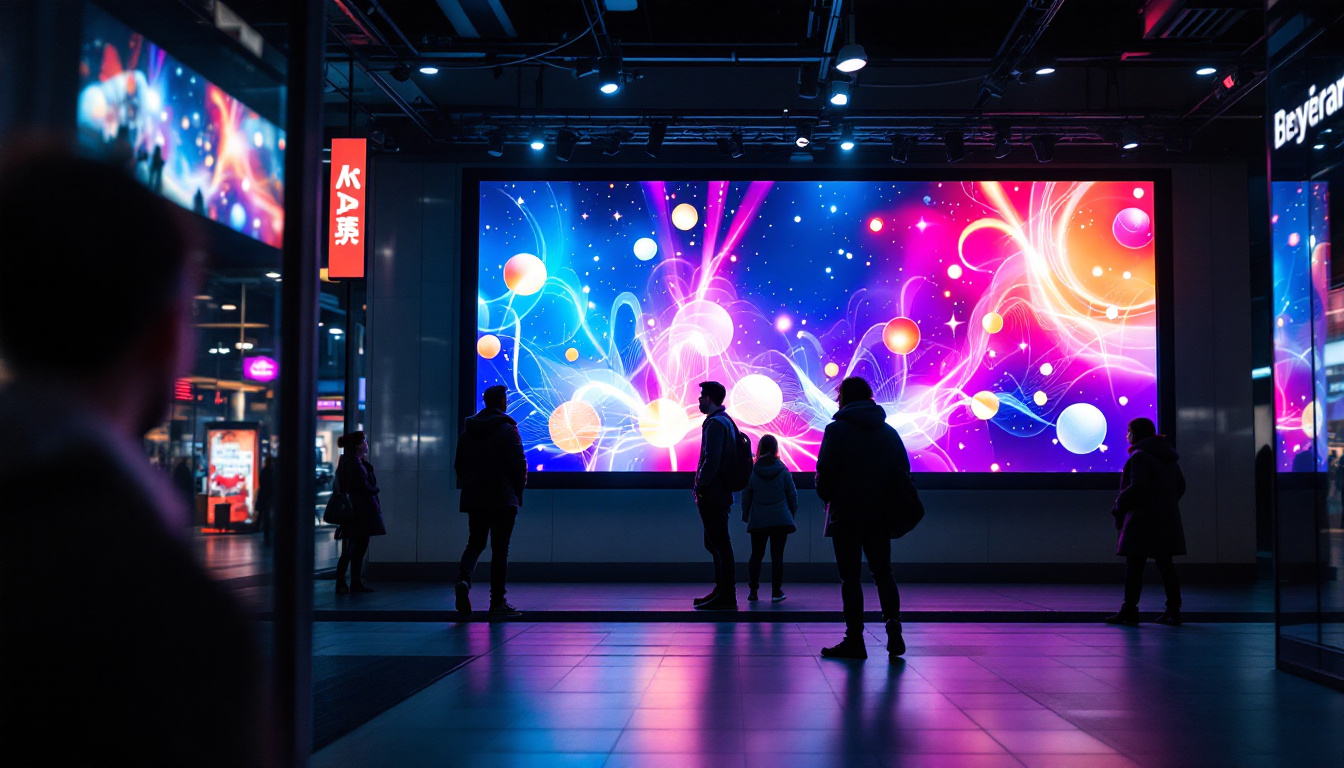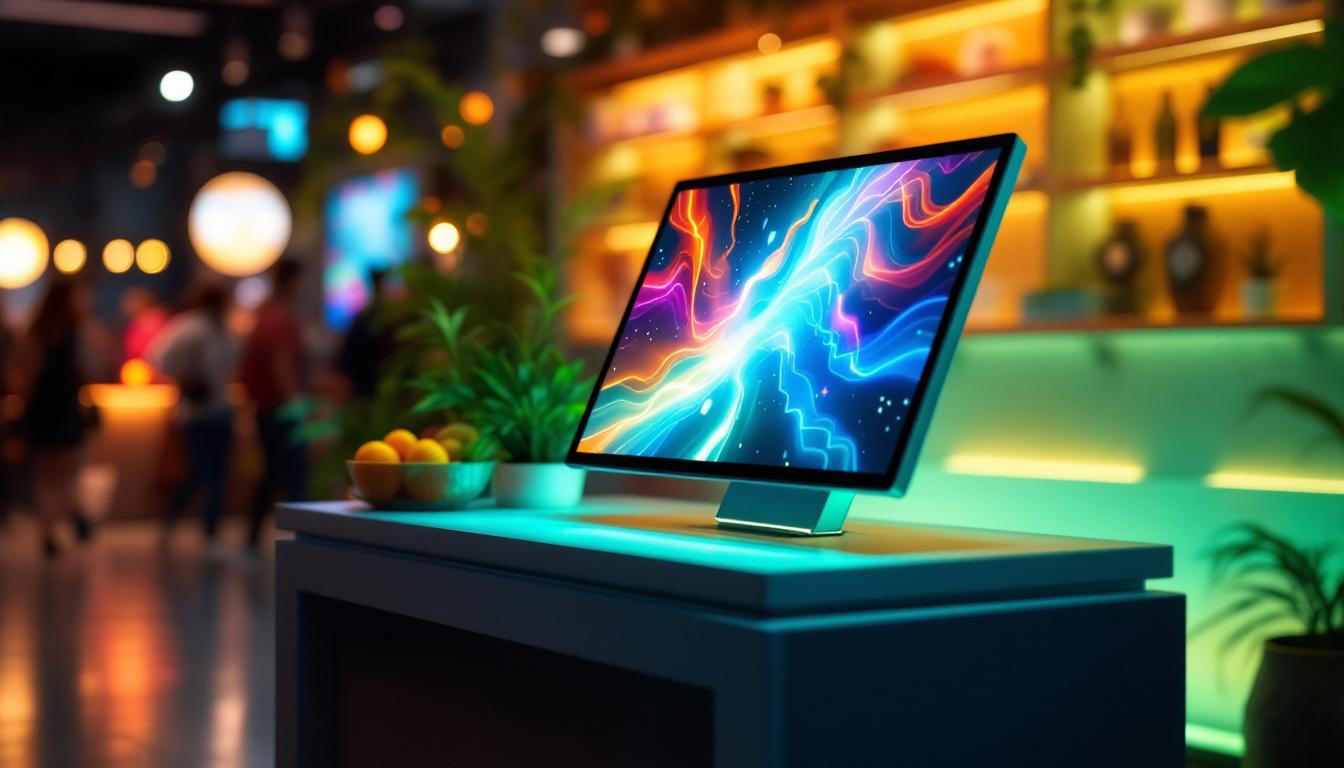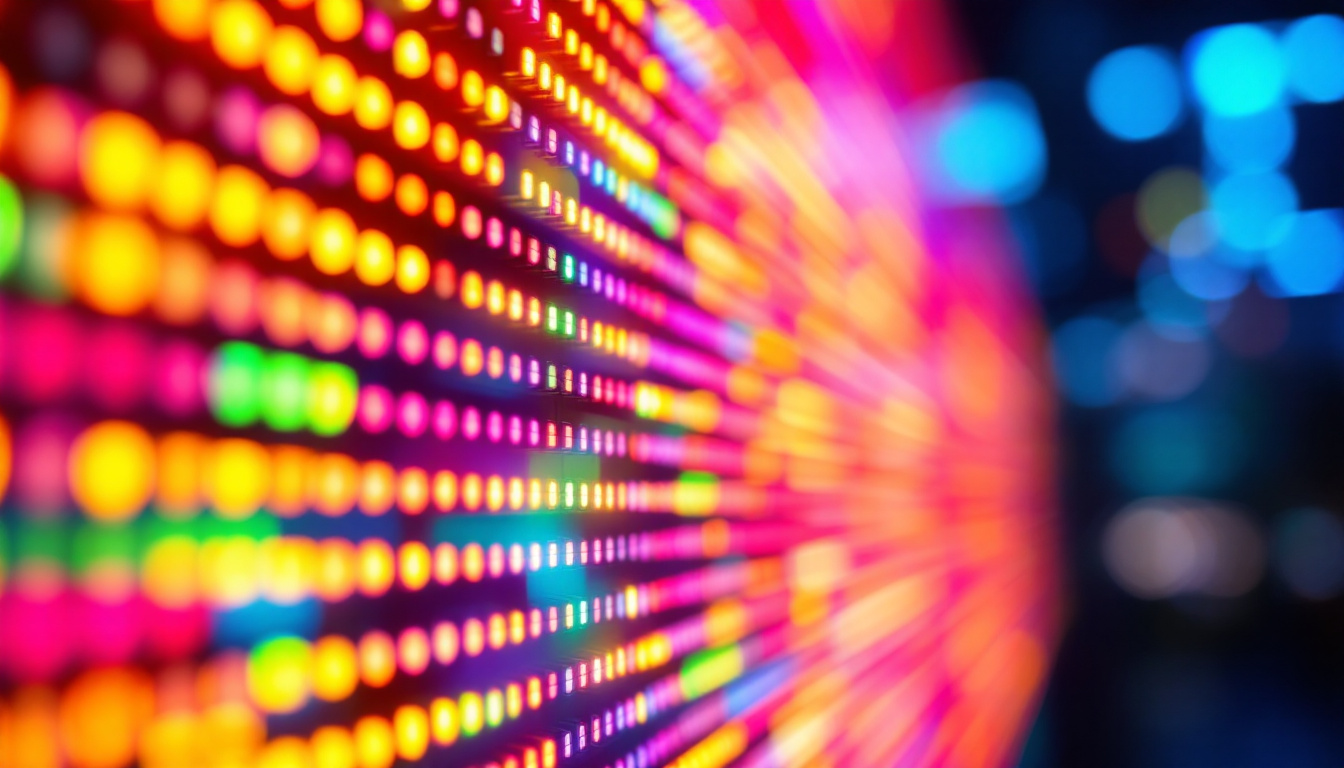In the realm of modern technology, video displays have undergone a significant transformation, with LED (Light Emitting Diode) displays leading the charge. Offering vibrant colors, high brightness, and energy efficiency, LED displays have become a staple in various applications, from televisions to large-scale advertising billboards. This article delves into the intricacies of LED displays, exploring their technology, benefits, and applications.
Understanding LED Display Technology
To appreciate the advantages of LED displays, it is essential to understand the underlying technology. LED displays utilize semiconductor diodes that emit light when an electric current passes through them. This technology is distinct from traditional LCD (Liquid Crystal Display) screens, which rely on backlighting to illuminate pixels. By directly emitting light, LED displays can achieve greater brightness and contrast ratios, making them ideal for a variety of environments, from dimly lit rooms to bright outdoor settings.
Types of LED Displays
LED displays can be categorized into several types, each with unique characteristics and applications. The two primary types are:
- Direct View LED: This type consists of individual LED modules that create images by directly emitting light. It is commonly used in large outdoor displays and digital billboards, where visibility from a distance is crucial. These displays can also be configured in various shapes and sizes, allowing for creative installations that can capture attention in bustling urban environments.
- LED-backlit LCD: In this configuration, LED lights are used to illuminate an LCD panel from behind. This approach enhances the brightness and color accuracy of traditional LCD screens, offering a more vibrant viewing experience. This type is prevalent in televisions and computer monitors, where users benefit from improved energy efficiency and thinner designs compared to older technologies.
How LED Displays Work
At the core of an LED display is a matrix of tiny LED lights, typically arranged in pixels. Each pixel can emit red, green, or blue light, and by adjusting the intensity of each color, a wide range of colors can be produced. This color mixing technique allows for the creation of vivid images and videos, making LED displays particularly popular in entertainment and advertising industries.
Moreover, the resolution of an LED display is determined by the number of pixels it contains. Higher pixel density results in sharper images, making LED displays suitable for applications requiring high video clarity, such as broadcasting and gaming. The advancements in pixel technology have also led to the development of ultra-high-definition (UHD) displays, which offer even more detail and clarity, enhancing the viewer’s experience. Additionally, the rapid refresh rates of LED displays minimize motion blur, which is especially beneficial for fast-paced content like sports and action films.
Another significant aspect of LED technology is its energy efficiency. Compared to traditional display technologies, LED displays consume less power, which not only reduces operational costs but also contributes to a smaller carbon footprint. This energy efficiency is particularly advantageous for large-scale installations, such as stadiums and arenas, where the displays operate for extended periods. Furthermore, the longevity of LED lights means that maintenance costs are lower, as they typically last longer than other types of lighting solutions, making them a cost-effective choice for businesses and organizations looking to invest in durable display technology.
Benefits of LED Displays
LED displays offer numerous advantages over traditional display technologies, making them a popular choice for various applications. Some of the key benefits include:
Superior Brightness and Contrast
One of the most notable features of LED displays is their ability to achieve high brightness levels. This characteristic is particularly advantageous in environments with significant ambient light, such as outdoor settings. The high contrast ratio also enhances the visibility of images and videos, allowing for a more immersive viewing experience. This makes LED displays ideal for advertising billboards, sports arenas, and public transportation systems, where clarity and visibility are paramount. Furthermore, the vibrant colors produced by LED technology can captivate audiences and draw attention more effectively than traditional displays.
Energy Efficiency
Compared to traditional display technologies, LED displays are significantly more energy-efficient. They consume less power while delivering superior brightness, which translates to lower electricity costs. This energy efficiency also contributes to a reduced carbon footprint, making LED displays an environmentally friendly option. Many businesses are now opting for LED technology not only to save on energy bills but also to promote sustainability initiatives. Moreover, advancements in LED technology continue to improve energy consumption, with newer models utilizing smart technology to adjust brightness based on ambient light, further enhancing their efficiency.
Longevity and Durability
LED displays are designed to last longer than their LCD counterparts. With a lifespan often exceeding 50,000 hours, they require less frequent replacements, resulting in lower maintenance costs. Additionally, LED technology is more resilient to shock and vibration, making it suitable for various demanding environments. This durability is particularly beneficial for outdoor installations, where displays are exposed to harsh weather conditions. The sealed construction of many LED displays protects them from dust and moisture, ensuring consistent performance over time. As a result, businesses can rely on LED displays for long-term use, minimizing downtime and maximizing return on investment.
Versatility in Applications
Another significant advantage of LED displays is their versatility. They can be used in a wide range of applications, from large-scale outdoor advertising to indoor digital signage in retail environments. The modular design of LED panels allows for creative configurations, enabling businesses to customize their displays to fit specific spaces and needs. Whether it’s a curved screen in a shopping mall or a massive video wall in a concert venue, LED technology can adapt to various formats and sizes. Additionally, the ability to display dynamic content, such as videos and animations, enhances engagement and communication, making LED displays a powerful tool for marketers and event organizers alike.
Applications of LED Displays
The versatility of LED displays has led to their widespread adoption across numerous sectors. Here are some notable applications:
Advertising and Marketing
One of the most prominent uses of LED displays is in advertising. Digital billboards and signage leverage the vibrant colors and high brightness of LED technology to capture the attention of passersby. These displays can be easily updated with new content, allowing businesses to promote their products and services dynamically.
Entertainment and Events
In the entertainment industry, LED displays are commonly used in concert venues, theaters, and sports arenas. Large-scale LED screens can enhance the audience’s experience by providing clear visuals and engaging content. Additionally, LED technology is increasingly used in stage productions and live events to create stunning visual effects.
Corporate and Educational Settings
LED displays have found a place in corporate environments, where they are used for presentations, video conferencing, and information displays. In educational settings, these displays facilitate interactive learning experiences, enabling teachers to present information engagingly and effectively.
Challenges and Considerations
While LED displays offer numerous advantages, they are not without their challenges. Understanding these limitations is crucial for making informed decisions regarding their use.
Cost Considerations
Although the prices of LED displays have decreased over the years, they can still represent a significant investment, particularly for large installations. Organizations must weigh the initial costs against the long-term benefits, including energy savings and reduced maintenance expenses.
Viewing Angles
Another consideration is the viewing angle of LED displays. While many modern LED displays offer wide viewing angles, some lower-quality models may suffer from color distortion when viewed from an angle. This limitation can impact the effectiveness of displays used in certain applications, such as public spaces.
Heat Generation
LED displays can generate heat during operation, particularly in high-brightness applications. Proper ventilation and cooling systems may be necessary to prevent overheating, especially in large installations. This requirement can add to the overall complexity and cost of the display setup.
Future of LED Display Technology
The future of LED display technology looks promising, with ongoing advancements aimed at enhancing performance and expanding applications. Innovations in microLED and OLED technologies are paving the way for even more refined displays.
MicroLED Technology
MicroLED technology is a cutting-edge development that utilizes tiny, individual LED chips to create displays with exceptional resolution and color accuracy. This technology promises to deliver even better performance than traditional LED displays, with the potential for flexible and transparent screens.
Integration with Smart Technology
As smart technology continues to evolve, LED displays are increasingly being integrated into smart environments. This integration allows for features such as automated content updates, remote management, and enhanced interactivity, making LED displays even more versatile and user-friendly.
Environmental Sustainability
With growing awareness of environmental issues, the demand for sustainable display solutions is on the rise. Future LED displays are likely to focus on eco-friendly materials and energy-efficient technologies, further solidifying their place as a responsible choice in the display market.
Conclusion
LED displays have revolutionized the way visual content is presented, offering unmatched brightness, energy efficiency, and longevity. Their versatility allows for a wide range of applications, from advertising to education, making them an essential component of modern technology.
As advancements continue to shape the future of LED display technology, it is clear that these displays will remain at the forefront of visual communication. With ongoing innovations and a focus on sustainability, LED displays are set to play a pivotal role in enhancing the clarity and impact of video content in the years to come.
Discover LumenMatrix’s Innovative LED Solutions
Ready to elevate your visual content with unparalleled clarity and impact? LumenMatrix is at the forefront of LED display technology, offering a diverse range of solutions tailored to your needs. From vibrant Indoor LED Wall Displays to dynamic Outdoor LED Wall Displays, and from sleek LED Poster Displays to immersive LED Sports and Floor Displays, our products are designed to captivate and engage. Experience the future of visual communication with our Custom, All-in-One, and Transparent LED Displays. Check out LumenMatrix LED Display Solutions today and transform your space into a beacon of innovation and creativity.

